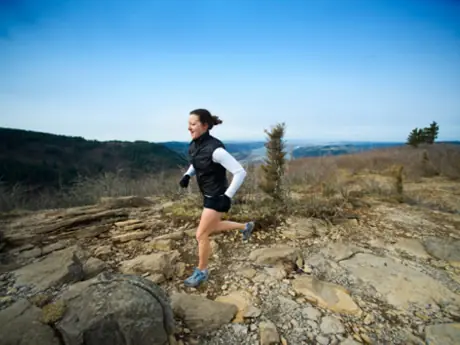
Unless you're racing on a track, there's some kind of terrain you'll need to be prepared for come gun-time. Even during track season, athletes have much to gain from varying the terrain on which they complete their workouts. The top three reasons to vary your training terrain include building power and speed, preventing injury and adding diversity to your routine.
- Power and Speed: Hills build strength, and this power, when exercised on flat terrain, translates to speed. That same kind of logic applies to doing repeats on grass; the times may be "slower," but you're working harder and building strength.
- Injury Prevention: Running on softer, more forgiving surfaces helps reduce impact and thus lowers your chances for injuries in the long term.
- Diversity: Running is a very repetitive action; you're mostly working in a single, horizontal plane. By varying things slightly you're able to give your body a bit of diversity. If you fail to do this, smaller muscles get weak and imbalances become injuries in-waiting.
These are general reasons why mixing up your running terrain is a good idea, but if you know your actual race course will have key elements you'll need to be prepared for, it's even more important to introduce those same obstacles in training.
More: 6 Tips to Tackle Any Terrain
Improve Your Performance on Hilly Courses
Uphill Repeats
It takes power to get up those hills; including uphill repeats may seem obvious, but not all runners actually do hill work, or they don't mix up the kind of work that they do. Approach hills with a three-pronged approach, similar to your regular running workouts:
1. Do 100- to 200-meter hill bursts, and allow for full recovery between each repeat. This is your speed session for the week.
2. Complete longer, 600- to 1,600-meter hill repeats for your endurance-focused interval sessions. You can also do tempo runs uphill (on a treadmill set on a grade if you don't have an actual course).
3. Include rolling hills into your easy days to "sneak" hill work in.
- 1
- of
- 2
About the Author

Get ACTIVE on the Go


Couch to 5K®
The best way to get new runners off the couch and across the finish line of their first 5K.
Available for iOS | Android






Discuss This Article